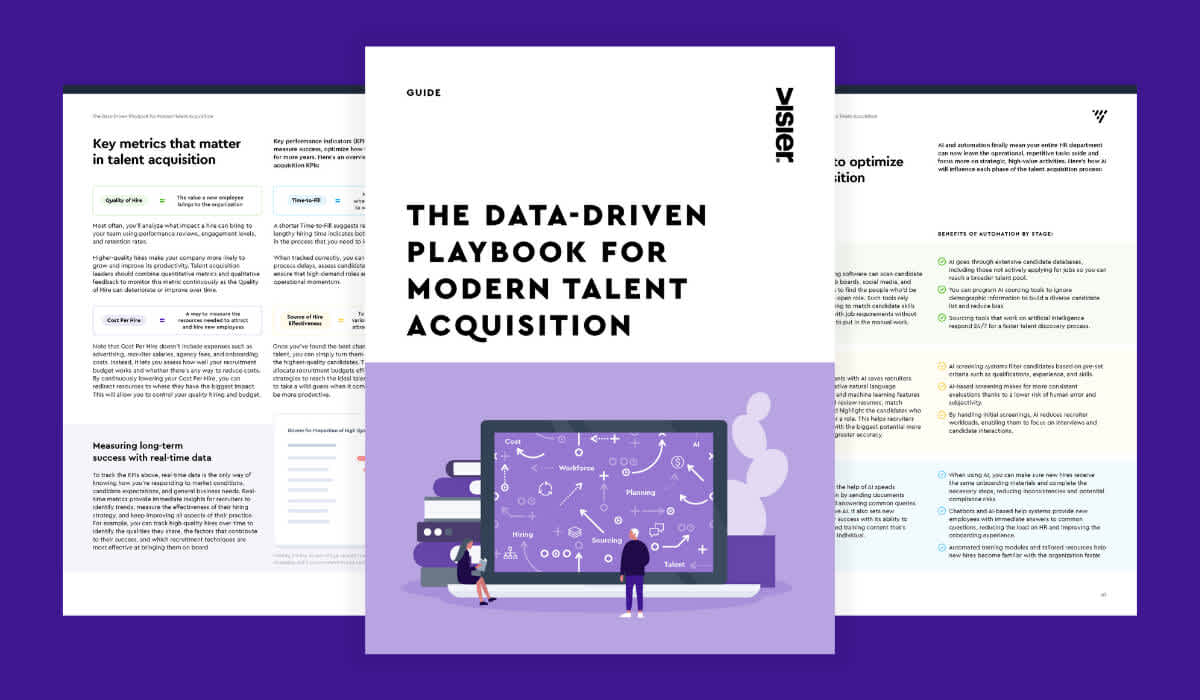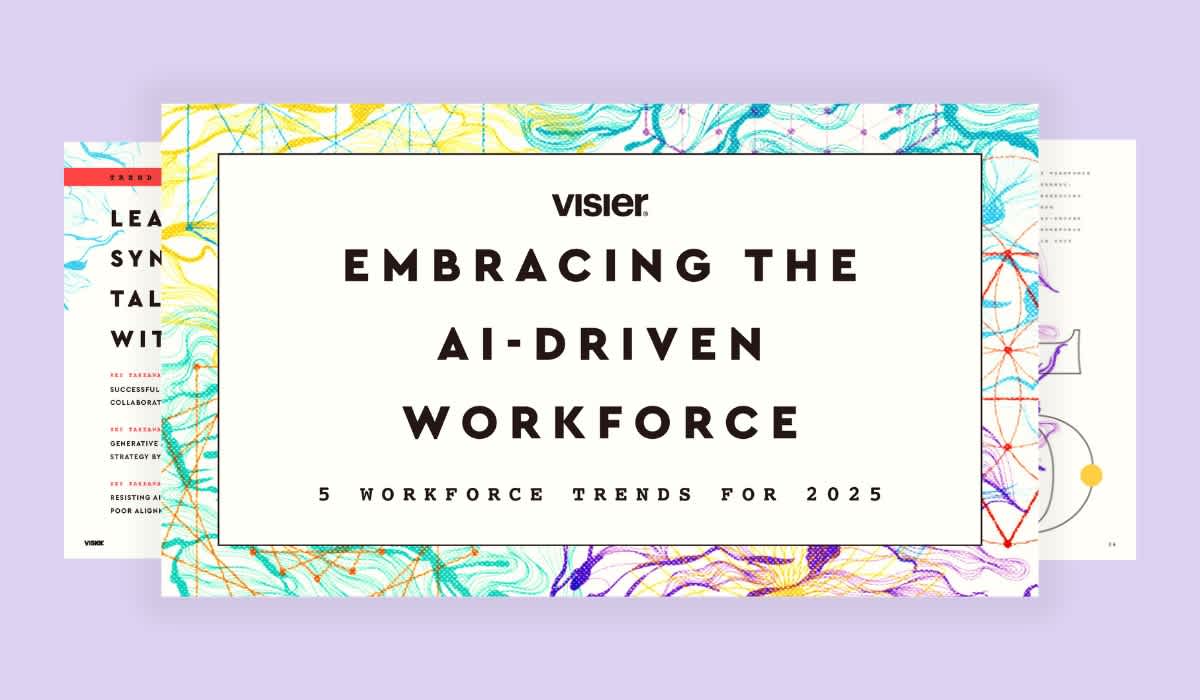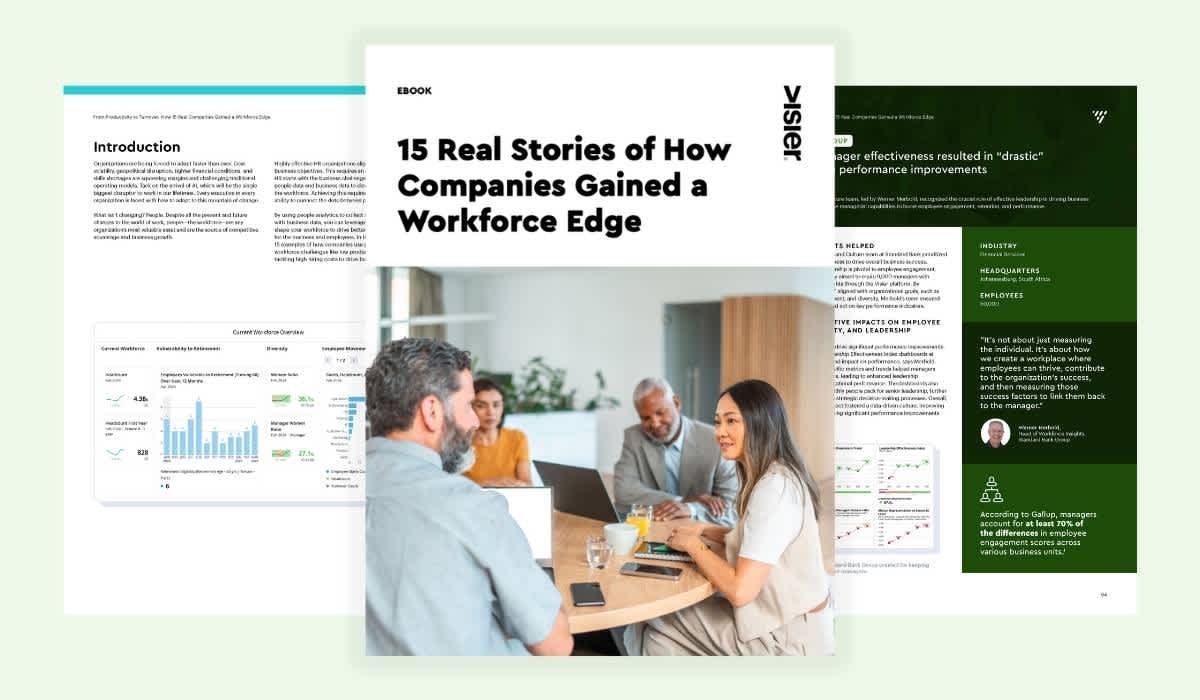From Guesswork to Growth: The Impact of Data-Driven HR Decisions
What if every leader in your company had access to real-time people data? Learn how data-driven HR improves decision-making, boosts efficiency, and aligns teams with business goals.

Companies benefit when HR and business leaders have their hands on people data and can see trends and make predictions about the workforce. But what about your company’s line managers? Data-driven decision-making outperforms guesswork. The benefits of proactive, predictive analytics that empower organizational growth shouldn’t be left on the table.
But before we get into how you can get started with data-driven HR analytics, let’s cover the basics.

What is data-driven HR?
Data-driven HR is like a GPS for making strategic decisions that impact business outcomes. Instead of guessing the best route (or making decisions based on intuition), you plug in the destination (organizational goals) and let the data navigate you through the most efficient path.
It’s not about wandering around hoping you’ll get there—it's about using real-time insights to stay on track, avoid pitfalls, and make smarter choices along the way. Just like how a GPS helps you avoid traffic, data-driven HR helps you avoid costly hiring mistakes and mismanagement.
Understanding its benefits is worth two minutes of your time:
1. Alignment on company-wide goals
“When everyone has access to data, data becomes more than just a single point of information. It becomes a North Star,” says Paul. He’s passionate about what’s achievable when managers and leaders have access to people data.
“By having everyone grounded in the same set of data, you can take the smallest moments and the decisions that happen every day, at every level, and connect them to a larger strategy and a bigger outcome.” For example, if your company’s goal is to improve diversity, equity, and inclusion, it will be more valuable for every department to know how they fit in and if the company is paying equitably based on demographics.
2. Better efficiency
Can you drive without seeing the road? Or lead a department without knowing which roles you’re going to have to hire replacements for a year from now? Success happens faster when all people leaders have the information they need to make good decisions.
“It is not easy for an organization to differentiate themselves on product and service alone,” says Chris Havrilla, former V.P., HR Technology and Solution Provider Research at Deloitte. “Having the right people with the right skills and capabilities to do the work, as well as a process to get information your workforce needs to do that work and achieve desired outcomes is critical for any organization.” Chris also adds she foresees people analytics solutions spreading “beyond leadership and into the everyday work lives of employees to bring bite-sized, just-in-time insights for individuals and teams.”
This expanded level of access to data-driven decision-making will not only propel productivity but also free up people analytics teams to focus more on what they do best: developing models, providing more advanced analytical insights, and raising data literacy within their organizations—yet another supporting argument for the efficiency enabled by data democratization.
3. Increased accountability
Who are your top performers? Which teams are lagging behind in goals? Data-driven decision-making increases accountability. “When everybody can see how their individual decisions connect to a strategy, it helps change the way organizations think about accountability in DEI, revenue, and changes in the workforce.” says Paul Rubenstein, CHRO at Visier.
“You’re then connecting with the larger enterprise goals. Arriving at this harmonious outcome, though, requires a reallocation of data ownership and that’s not always an easy task.” When everyone has access to people data, leaders at every level can find out which teams are doing well and which ones need guidance so they can make changes before problems become critical.

6 actionable steps to implement data-driven HR
1. Centralize and democratize access to data
Generative AI tools like Visier's Vee make HR data more accessible by providing real-time insights through conversational queries. This democratizes data by enabling managers and HR professionals to get actionable insights without requiring advanced analytics expertise. Start by integrating AI tools with your existing HR systems to centralize workforce data and ensure secure, role-based access to insights.
2. Develop AI-powered people analytics strategies
Focus on key HR priorities such as turnover analysis, diversity metrics, and employee engagement. For example:
Use generative AI prompts to analyze high-risk turnover among top performers and identify root causes (e.g. compensation, engagement). Track diversity trends and compare them with industry benchmarks to guide DEI initiatives. Quantify how engagement scores impact financial outcomes like revenue or customer retention.
3. Enhance decision-making for managers
Empower managers with micro-decision support. Generative AI can answer questions like, “Which employees are suitable for leadership roles?” or “How does overtime impact productivity?” These tools help managers make data-driven decisions quickly, improving team efficiency and alignment with organizational goals.
4. Optimize workforce planning and budgeting
Use AI to bridge the gap between HR and business metrics. Vee, for instance, can help correlate employee tenure with sales performance or calculate metrics like the cost of vacancies. This equips HR leaders with insights to align people strategies with broader financial goals and plan and adapt to various scenarios quickly.
5. Build AI-driven learning and development programs
Use AI to monitor participation in learning activities and tailor training opportunities to employees’ needs. This personalization fosters skill development and boosts engagement across the organization.
6. Continuously refine data practices
AI tools excel when provided with accurate, well-structured data. Start by cleaning and integrating disparate data sources. Then, encourage iterative improvement by analyzing AI outputs for accuracy and alignment with business needs.
Data democratization leads to better business outcomes
Those who have the insights have the winning advantage. But the old way of siloing people data and the insights it produces is no longer the best strategy in this new world of work. Every level of leadership needs the value that data-driven decision-making provides.
This is especially true as we’re expecting a massive shortage of labor and skills by 2030. Added to this, artificial intelligence and a generally uncertain job market, seemingly uncontrollable issues, all have one thing in common at their core: the workforce.
The future of work requires a proactive, predictive people analytics function to empower organizational growth, and when people data is only used by HR, a significant portion of business value is left on the table. Get more from your people data with Visier Workforce AI Edge.



